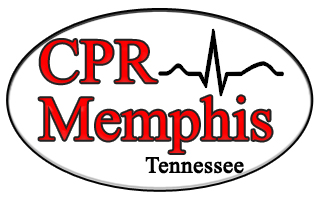UNKNOWN LAB REPORT, Microbiology
Unknown Number 121
Laura Puckett
Spring 2013
INTRODUCTION
Microbiology is an important field of study. Understanding how microbes work within the body leads to understanding how to decrease the chance of contracting a harmful one. This is very important knowledge for medical professionals to have to keep patients safe and healthy. Throughout the semester technique and knowledge of different tests were provided. These were then applied to discovering two unknown bacteria from a single test tube.
MATERIALS AND METHODS
The unknown test tube number 121 was provided by the instructor. The methods used were learned from the previous labs throughout the semester out of the “Lab Manual for General Microbiology” by McDonald, Thoele, Salsgiver and Gero (2).
The first procedure that was carried out was an isolation streak from the original tube onto a Nutrient Agar (NA) plate, streaking in the pattern described in the lab manual (p.10). Another isolation streak was performed. A Gram stain was performed on the isolated bacteria. This was determined to be Gram negative rods. From here, the bacterium was isolated onto an Eosin-Methylene Blue (EMB) plate to determine if the bacterium produced lactose fermenters. Concluding that it did ferment lactose, the bacterium was inoculated into a tube filled with Urea broth. This test showed the bacterium did not contain the enzyme urease. Four more tests, Casein, Starch, Simmons Citrate and a Nitrate test, were all performed to confirm the bacterium was Enterobacter aerogenes.
The original bacteria from tube #121 was streaked onto an Mannitol Salt Agar (MSA) plate to attempt to isolate the Gram positive bacteria because this type of agar inhibits the growth of Gram negative bacteria. This resulted in the growth of bacteria and the MSA test was concluded to be positive for mannitol fermenters. A Gram stain was performed on this bacterium and proved to be Gram positive cocci. The next test that was performed was inoculating a Nitrate test tube. This test was positive after adding reagents A and B and producing a red color. The bacterium was thought to be Staphylococcus aureus and four more tests, Starch, Casein, Kligler and Urea were performed to confirm this. The instructor was consulted if this was correct, and it was not. The tests were examined again and because the MSA test was positive it was believed that the bacterium was Enterococcus faecalis. The instructor was consulted again, and this was again incorrect. It was determined by process of elimination that the bacterium was Staphylococcus epidermidis because the Gram stain had concluded its shape was cocci, and the other two Gram positive cocci had been eliminated.
Table 1. Gram Negative Bacterium displays the test, purpose, reagents, observations and results
All of the following tests were conducted on this Gram Negative unknown:
- Nutrient Agar
- Eosin-Methylene Blue (EMB)
- Urea
- Casein
- Starch
- Simmons Citrate
- Nitrate
Table 2. Gram Positive Bacterium displays the test, purpose, reagents, observations and results
All of the following tests were conducted on this Gram Positive unknown:
- Mannitol Salt Agar (MSA)
- Nitrate
- Starch
- Casein
- Kligler
- Urea
RESULTS
The isolation on the NA plate showed one type of bacterium that was white and milky. Only one bacterium was discovered. A Gram stain was performed and concluded that it was Gram negative rods. An EMB test was performed and showed a positive result for the fermentation of lactose. A Urea test was performed and showed a negative result. Thinking that the bacterium was Enterobacter aerogenes from the results of the EMB and Urea test, other tests were performed to confirm this notion. A Simmons Citrate, Nitrate, Starch and Casein test were all performed. The Simmons Citrate was positive, the Nitrate was positive, the Starch test was negative and the Casein test was negative. These tests confirmed the Gram negative bacterium was E. aerogenes. Table 1 and Flowchart 1 show these results.
Because the isolation test only produced one bacterium, the original test tube was streaked on a MSA plate. This test produced a light, white bacterium and was positive for mannitol fermenters. A Gram stain was performed and concluded the bacterium was Gram positive cocci. A nitrate test was performed and showed a positive result. Thinking it was Staphylococcus aureus from the results of the MSA and Nitrate tests, other tests were performed. These tests include a Starch test, Casein test, Kligler and Urea. The Starch test was negative, the Casein test was negative, the Kligler was positive for glucose and lactose fermenters and the Urea test was negative. The instructor was consulted to confirm the Gram positive unknown was S. aureus but the bacterium was not correct. After the tests were reviewed again the instructor was consulted to confirm the bacterium was Enterococcus faecalis but this was again incorrect. This narrowed the bacterium down to Staphylococcus epidermidis because the Gram stain showed it was a Gram positive cocci and this was the last one out of the three. The rest of the tests were congruent with the S. epidermidis. Table 2 and Flowchart 2 show these results.
Table 1. Gram Negative Bacterium
|
TEST |
PURPOSE |
REAGENTS |
OBSERVATIONS |
RESULTS |
|
Gram Stain |
To determine the Gram color and shape of the bacterium |
Crystal violet, Gram Iodine, Alcohol, Gram Safranin |
Red rods |
Gram negative rods |
|
Nutrient Agar |
General media to isolate the bacteria |
None |
White bacterial growth, only one type seen |
Growth of one bacterium |
|
EMB lactose |
To determine if the bacterium ferments lactose |
Eosin, Methylene Blue |
Bacterial growth, pinkish-purple |
Positive lactose fermenter |
|
Urea |
To determine if the bacterium produces urease |
Phenol Red |
Color did not change |
Negative for urease |
|
Casein |
To determine if the bacterium produces the enzyme casease |
None |
White bacterial growth, no clearing |
Negative for casease |
|
Starch |
To determine if the bacterium produces amylase |
None (Iodine poured on top to clearly see clearing) |
White bacterial growth, no clearing |
Negative for amylase |
|
Simmons Citrate |
To determine if the bacterium uses citrate as sole source of carbon |
Sodium citrate, ammonium phosphate, bromthymol blue |
Medium turned from blue to green |
Positive citrate test |
|
Nitrate |
To determine if the bacterium reduces nitrate to nitrite |
Reagents A and B, Zinc
|
After adding reagents A and B the tube did not turn red, added zinc and didn’t turn red |
Positive nitrate test |
Table 2. Gram Positive Bacterium
|
TEST |
PURPOSE |
REAGENTS |
OBSERVATIONS |
RESULTS |
|
Gram Stain |
To determine the Gram color and shape of the bacterium |
Crystal violet, Gram Iodine, Alcohol, Gram Safranin |
Purple cocci |
Gram Positive cocci |
|
MSA |
To determine if the bacterium produces mannitol fermenters |
Phenol Red |
The medium turned from pink to yellow and white bacterium grew |
Positive for mannitol fermenters |
|
Nitrate |
To determine if the bacterium reduces nitrate to nitrite |
Reagents A and B |
After adding reagents A and B the tube turned red |
Positive nitrate test |
|
Starch |
To determine if the bacterium produces amylase |
None (Iodine poured on top to clearly see clearing) |
White bacterial growth, no clearing |
Negative for amylase |
|
Casein |
To determine if the bacterium produces casease |
None |
White bacterial growth, no clearing |
Negative for casease |
|
Kligler |
To determine if the bacterium ferments sugar and produces hydrogen sulfide |
Glucose, lactose, peptone, sulfates, iron, phenol red |
The medium turned yellow (both the slant and the butt) |
Positive for glucose and lactose fermenters |
|
Urea |
To determine if the bacterium produces urease |
Phenol Red |
There was no color change |
Negative for urease |
FLOWCHART 1
UNKNOWN #121
↓
Gram Stain
↓
Gram negative rod
↓
EMB (positive)
————————————————————————————————–
FLOWCHART 2
UNKNOWN #121
Gram Stain
Gram positive cocci
MSA (Positive)
DISCUSSION/CONLUSION
The test results led to the identification of both bacteria by completing one test, examining the result and determining which test would further narrow the spectrum of bacteria possible. The isolation only showed one bacterium, while the other one could not be distinguished. After completing a Gram stain on this bacterium and concluding it was Gram negative rods, an EMB test was done to further narrow the spectrum. This test was positive so the negative bacteria were crossed off along with the Escherichia coli because that would give a green result and only a purple result was found. This narrowed the spectrum down to two bacteria so a test that showed one negative and the other positive was found, a Urea test. This test was negative so it was believed that the bacterium was Enterobacter aerogenes. Four more tests were performed to support this belief and all of the tests confirmed E. aerogenes to be correct. The isolation from the original test tube did not show a Gram positive bacterium so it was streaked onto an MSA plate which inhibits growth of Gram negative bacteria. The bacterium grew and the test was positive so a Gram stain was performed to determine if this was truly Gram positive or if the Gram negative continued to grow. The Gram stain resulted in Gram positive cocci so this was believed to be the Gram positive bacterium. Because the MSA test was positive the negative bacteria were crossed out leaving two bacteria to decide between. The Nitrate test was chosen because it would result in positive for one bacterium and negative for the other. This test produced a positive result so it was believed that the bacterium was Staphylococcus aureus. Four more tests were done to confirm this belief and all of the tests were congruent with this bacterium. The instructor was consulted to make sure this was correct, but it was not. The tests were examined again and since the MSA plate was positive and there were only two bacteria that were positive for mannitol fermenters, it was believed that the bacterium was Enterococcus faecalis. The instructor was again consulted but again this was incorrect. It was then determined that because the Gram stain showed Gram positive cocci and there were only three bacteria with this shape, the bacterium had to be Staphylococcus epidermidis.
The identification for the Gram negative was correct and all tests confirmed this. The identification for the Gram positive was not correct. The first test gave a false result and this led to the wrong path. It is believed that the test tube was contaminated with Staphylococcus aureus, a bacterium that is found on the skin. Another possibility for the MSA plate giving a false result is due to an untrue isolation. The Gram negative bacterium is positive for mannitol fermenters and could have been giving this positive result.
The problem that was encountered was the contamination of the MSA plate, which led to a false result. Thinking the Gram positive bacterium was positive for mannitol fermenters led to the wrong path. The rest of the tests were congruent with S. epidermidis.
Enterobacter aerogenes is a bacterium that resides in the body’s normal intestinal flora. In healthy people it does not cause problems until the immune system is compromised. It is a nosocomial bacterium and is antibiotic resistant. This resistance is believed to have been caused by the overuse of cephalosporins in hospitals. E. aerogenes uses three methods to resist antibiotics: inactivating enzymes, alteration of drug targets and inhibition of the drug entering the cell. The major antibiotics that E. aerogenes is resistant to are β-lactamase drugs. The control of this bacterium is difficult and practices to avoid it are important. These include correct hospital techniques (“Enterbactor aerogenes” (1)).
References
1. “Enterobacter Aerogenes.” Bioquell. N.p., n.d. Web. 25 Apr. 2013.
<http://www.bioquell.com/technology/microbiology/enterobacter-aerogenes/>.
2. McDonald, Virginia, Mary Thoele, Bill Salsgiver, and Susie Gero. Lab Manual for General Microbiology.





